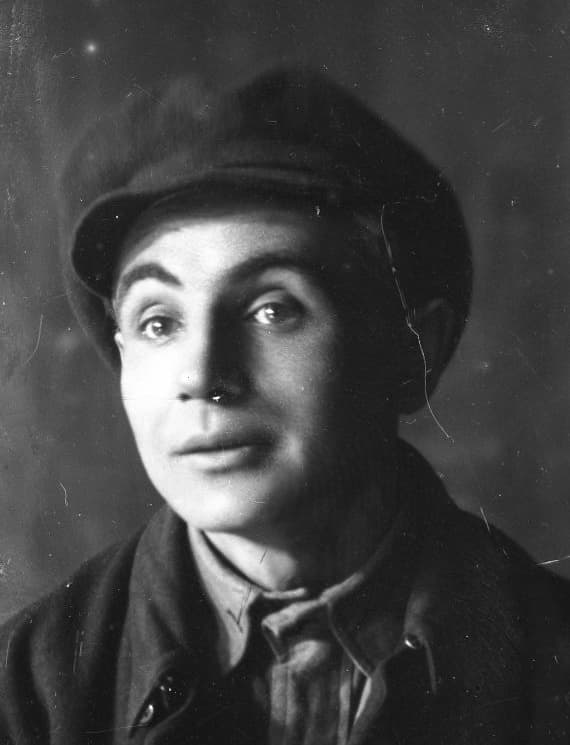Play in 4 acts by Mykola Kulish
Premier: October 17, 1925
Director: Pavlo Bereza-Kudrytskyi; Member of Director’s Lab: Khaim Shmain
Set Design and Costumes: Maiia (Militsa) Symashkevych
Tonal Design of Roles – Ivan Kunin
Cast
Kosharnyi – Les Serdiuk
Sekleta – Yevheniia Petrova
Todoska – Lesia Datsenko
Maksym – Mytrofan Kononenko
Koshchavka – Yosyp Hirniak Church
Elder – Demyd Babenko
Kurkul Chukhalo – Krushelnytskyi
Mariia – Lidiia Babenko-Krynytska
Bandit Rohachka – Fedir Radchuk
Lavro – Vyshniak
Commune Head – Stepan Shahaida
Luka, Commune Delegate – Amvrosii Buchma
Khymka – Valentyna Chystiakova, Liubov Hakkebush
Mykyshka – Borys Balaban
Yashka – Petro Masokha
Motrenka – Ryta Neshchadymenko
Pestyna – Pihulovych
Haraska – Andrii Shutenko
Baba Lukiia – Antonina Smereka, Hanna Babiivna
Grandpa Kasian – Serhii Khodkevych
Gypsy – Vasyl Stetsenko
Priest – Mykola Savchenko
Makar – Les Podorozhnyi
Peasants and others
The theme of the village and class confrontation echoed in unison in many plays staged at the Berezil Artistic Association and Berezil State Theater in the 1920s-30s. While the ultimate achievement of this stage symphony was undoubtedly Kurbas’s Dictatorship (1930), as early as autumn 1925 the young director’s laboratory participant Pavlo Bereza-Kudrytskyi sang the images of wealthy farmers in Mykola Kulish’s Commune in the Steppe. The play is about the creation of a commune and the struggle of the kurkuls with the poor for the mill and other objects. In the end, the kurkuls are defeated with the approval of city documents transferring the mill to be leased by the commune.
In addition to being staged at Berezil by director Les Dubovyk, the play was performed at the Ivan Franko Theater, Odesa Theater of the Revolution, and Kharkiv Chervonozavodskyi Theater. All these productions were ordered by the authorities, so it’s hard to talk about original interpretations and objective reviews in the press. For example, the reporter’s ideological bias is obvious in the following review of Cadres: “Berezil put on a thoughtful, vivid and ideologically consistent and sound play.” [2] The situation was similar with the analysis of the acting (“I don’t want to dwell on individual artists because obviously it wasn’t possible to add more detail and description to individual characters – the most important thing for the play was the social and class characteristics, and here the directors avoided everything that was secondary.
As for the acting of such masters as Hirniak and Krushelnytskyi, who had exceptionally ‘winning’ comic roles in the play, they consciously, obviously, (and correctly) did everything to obscure the comic parts and avoided the slightest caricature so as not to distract the audience from the main line of the play and not dissolve the intense tone of struggle and enthusiasm.”
The claim that Yosyp Hirniak and Marian Krushelnytskyi deliberately suppressed their acting skills sounds unconvincing. Yu. Dyvnych’s (pseudonym Yurii Lavrinenko) memoirs provide a better understand, for example, of how Hirniak portrayed the young Kotia: “The ability not to repeat was manifested in the contrast between the roles of Grandpa Yukhym and Koria in Cadres. Here the acting technique and skill give the image of a naïve boy, a homeless victim of the revolution who lost his parents at a young age but didn’t lose his humor and lyricism, and through his talents enters university along with other peasant boys (although at the beginning of the play he is cleaning the shoes of passersby on the street and learning to read from signs). And here the actor is able to find in the dead half of the Soviet text of the play a living grain of truth and to grow an image in front of the audience that would be interesting for decades to come. An image of people who, thrown to the bottom of an idiotic society and regime, can endure and move ahead without losing their human soul.” Hirniak’s collective image of Kotia reflected the fate of thousands of real homeless children in the new republic.

